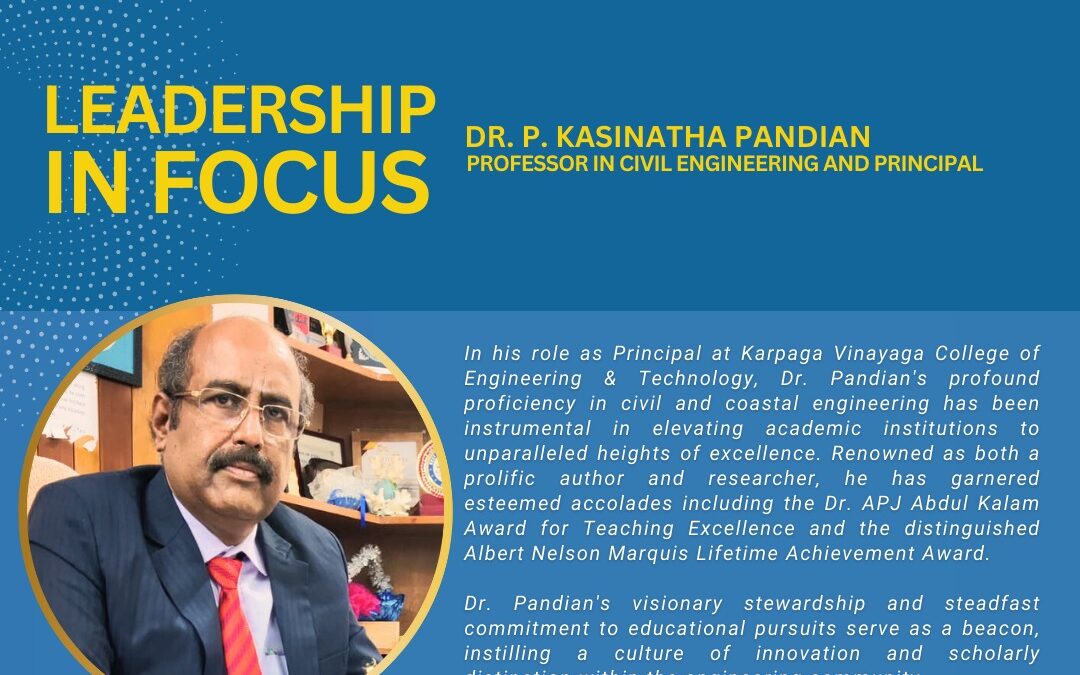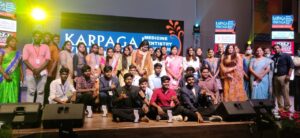
Leadership in Focus
Introducing “Leadership in Focus,” a series on KVCET social media spotlighting profiles of our campus mentors. Our inaugural feature highlights Dr. P. Kasinatha Pandian, Professor in Civil Engineering and Principal, whose visionary leadership propels the institution towards excellence.
In his role as principal at Karpaga Vinayaga College of Engineering & Technology, Dr. Pandian’s profound proficiency in civil and coastal engineering has been instrumental in elevating academic institutions to unparalleled heights of excellence. Renowned as both a prolific author and researcher, he has garnered esteemed accolades including the Dr. APJ Abdul Kalam Award for Teaching Excellence and the distinguished Albert Nelson Marquis Lifetime Achievement Award. Dr. Pandian’s visionary stewardship and steadfast commitment to educational pursuits serve as a beacon, instilling a culture of innovation and scholarly distinction within the engineering community.






